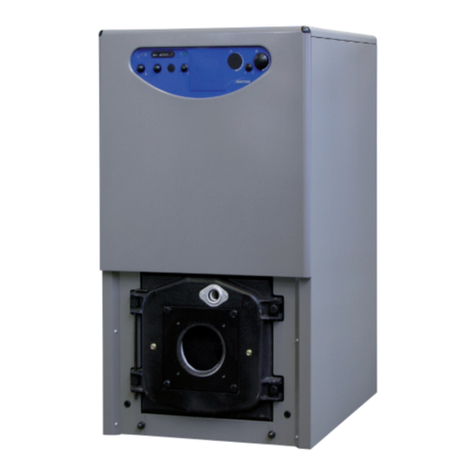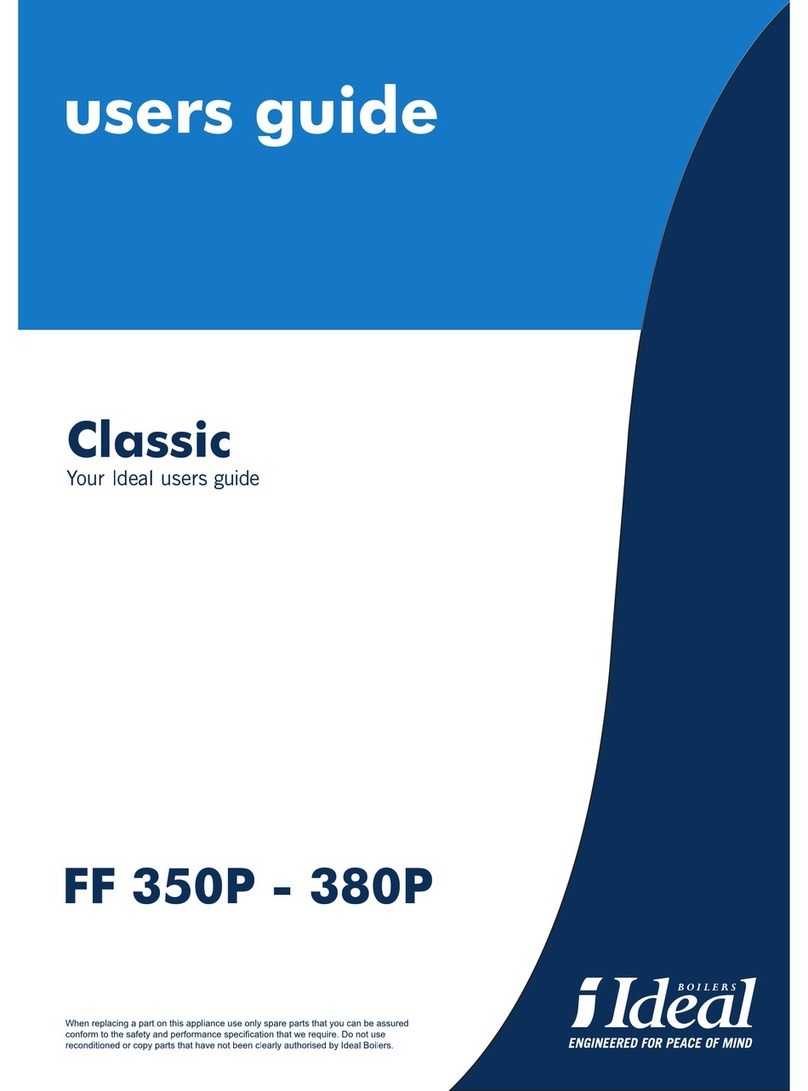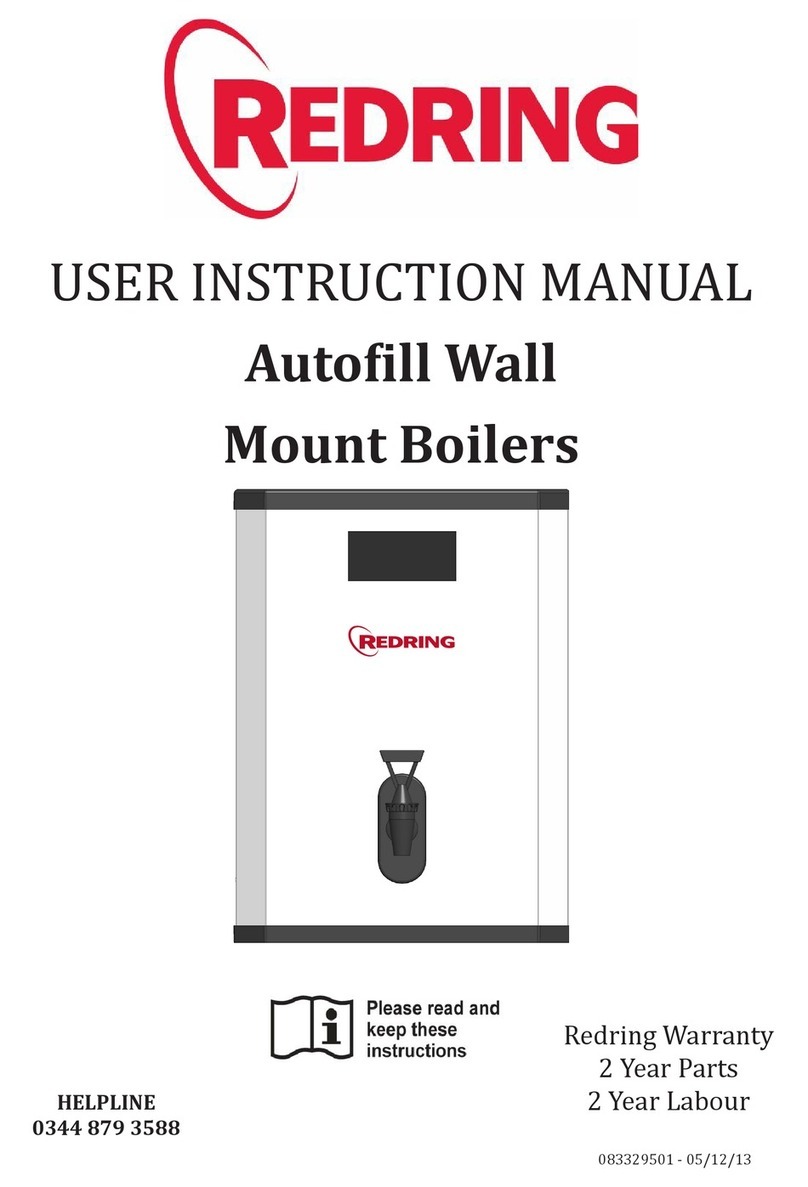AD GREEN TOBY Series Programming manual

Compact-Size Automatic Sub-Pressure Wood Pellet Boiler TOBY
20-30 KW
Directions for usage and maintenance
August 22, 2012

Contents
1 Boiler data 2
1.1 Technical data chart according to EN 303-5 . . . . . . . . . . . . . . . . . . . . . . . . . . 3
1.2 OnProduct............................................ 3
2 Directions for storage and transport 4
2.1 Deliveryform........................................... 4
2.2 Deliveryrange........................................... 5
3 Safety remarks 5
4 Boiler placement 6
4.1 Boilerroom............................................ 6
4.2 Chimney.............................................. 7
4.3 Filling the system with water . . . . . . . . . . . . . . . . . . . . . . . . . . . . . . . . . . 7
4.4 Connecting the boiler with a closed central heating system . . . . . . . . . . . . . . . . . . 8
4.4.1 Installationmethod1 .................................. 8
4.4.2 Installationmethod2 .................................. 9
4.5 Fitting the boiler to an open central heating system. . . . . . . . . . . . . . . . . . . . . . 10
5 Firing the boiler 11
5.1 Regulation panel of the TOBY boiler . . . . . . . . . . . . . . . . . . . . . . . . . . . . . . 11
5.1.1 Buttonsdescription.................................... 11
5.1.2 Messagesonthepanel .................................. 12
5.2 MainWorkingcycle ....................................... 12
5.3 TurningOff ............................................ 12
5.4 Sevendaystimer ......................................... 13
5.4.1 Activation of the seven day timer . . . . . . . . . . . . . . . . . . . . . . . . . . . . 13
5.4.2 Settingtheclock ..................................... 13
5.4.3 Setting first daily turning on/off time . . . . . . . . . . . . . . . . . . . . . . . . . 13
5.4.4 Setting second daily turning on/off time . . . . . . . . . . . . . . . . . . . . . . . . 13
5.4.5 Setting day for turning on/off time . . . . . . . . . . . . . . . . . . . . . . . . . . . 13
5.5 Boiler cleaning and maintenance . . . . . . . . . . . . . . . . . . . . . . . . . . . . . . . . 13
A Exit flue gas analysis for TOBY 14
A Declaration Of Conformity 15
1

1 Boiler data
2

1.1 Technical data chart according to EN 303-5
Nominal power TY 20 KW 30 KW
Power range 5 KW - 20 KW 10 - 30 KW
Boiler weight 275 kg 315 kg
Flow/Return (inch) 1” 5/4”
Fill/Drain Tap (inch) 1/2" 1/2"
Flue gas output diameter (Φ) 80 mm 80 mm
Output gas temperature 160 ◦C 160 ◦C
Storage capacity 120 kg 150 kg
Pellet consumption at min power min 1 kg/h min 2 kg/h
Pellet consumption at max power max 4 kg/h max 6 kg/h
Necessary draught 0 Pa 0 Pa
Water volume 70 lit 100 lit
Electrical network 220 V 50 Hz 220 V 50 Hz
Efficiency toward flue gases 94 % 94 %
Boiler class 3 3
1.2 On Product
•TOBY represents one of the most sophisticated solutions for automatic combustion of wood pellets
to be found on the market.
•It is completely adapted to burn wood pellet as a primary fuel, achieving maximum efficiency level
up to 94% and a very low exit temperature for flue gases (below 160 ◦C).
•Ignition, start-up and turning-off are fully automatized. Combustion control is optimized using
algorithms such as ‘modulation’ which automatically decreases pellet dose as the difference between
desired and reached temperature is decreasing.
•Working principle of this boiler is based on the “sub-pressure” of the heating chamber. The chamber
is completely air-proof so that air flow in the boiler is fully controlled by the exhausting fan mounted
on the back. Boiler regulation completely controls the quantity of the air inside the heating chamber:
optimum combustion comes as a result.
•Boiler chamber is made by welding 5mm thick steel plates (all surfaces in touch with fire). Other
parts are made of 4mm steel.
•The efficiency of this boiler is much higher than that of the conventional boilers with natural air
flow. This boiler does not need a long chimney, just an ordinary flue gas outlet. It can be put in
any part of the building, which is easily done thanks to its compact dimensions (pellet storage is
above boiler, overall boiler length 70cm only).
•Pellets are fed to boiler via internal transporter screw inside the storage tank. From there pellets
are fed over to heating chamber where they fall free to the designated melting area (the ’actual’
embedded burner of the boiler). Storage and melting area are physically divided. There is no chance
for reverse fire to happen.
•Maintenance and cleaning are reduced to a minimum compared to all solid fuel boilers – only once
a week, if not less than that, with a premium quality pellet and proper use. Please note the handle
on the front side of the boiler. This is designated for occasional cleaning of the heat exchanger of
the boiler (forcing the ash to fall down to te bottom of the boiler).
3

Boiler parts I: 1. Primary air inlet 2. Embedded pellet retort brenner 3. Pellet feed line from storage 4.
Inner chamber 5. Outter chambers with heat exchangers 6. Exhaust fan
Boiler parts II: 1. Opening to place pellets into pellet storage 2. Pellet storage (bigger unit) 3. Slope to
force pellets slide into the smaller storage 4. Opening of the smaller storage, pellets fall in through 5. Pellet
storage (smaller unit)
2 Directions for storage and transport
2.1 Delivery form
Boiler is shipped with plastic protection sleeve on a europallet.
4

Boiler must be in its upright position all the time.
The rotation of the boiler during the shipment or installation represents a serious risk and
can lead to damaging the boiler.
It is forbidden to place one boiler onto another.
The boiler can be stored only in closed rooms with no atmospheric influence. The humidity
in the storing room also must not exceed the critical value of 80%, so as not to create any condensate.
The temperature of the storing room must be in the range from 0 ˚C to 40 ˚C.
When unpacking the boiler, you must check whether the paint on the boiler coating has been
scratched somewhere and whether all parts of the boiler stand in their proper position.
2.2 Delivery range
Together with the boiler, also the following parts are supplied:
•Cleaning kit with an external ash tray
•Warranty paper and this boiler manual
•Boiler regulation (built-in already)
Along the boiler followinf parts are NOT INCLUDED:
•Thermomanometer and the safety group
•Mixing valve
•Boiler valves etc.
3 Safety remarks
The end user must follow the guidelines from this manual all the time. In contrary case the
warranty won’t be acknowlidged.
Boiler chamber is tested on test pressure of 6 bar in our own facility.
Pay strict attention that boiler valves are always open while boiler in use.
Don’t forget to do a mechanical reset of the circulation pump at start of every heating season.
5

Clean the boiler on a regular base.
An expert should be entrusted with the mounting of the heating and the initial operation.
This must be a person who will take over the responsibility and guarantee the correct operation of the
boiler and of the complete central heating system. In the case of an incorrectly planned system with
manifesting deficiencies caused by the respective person’s incorrect installation of the system, which can
again lead to an incorrect operation of the boiler, the complete liability for the material damage and
potential new costs arising in relation to it is borne exclusively by the person who was entrusted with
the mounting of the central heating system, and not by the boiler manufacturer, sales representative or
seller.
While in use, some parts of the boiler may be hot. Don’t touch the boiler without appropriate
hand protection against heat.
If some parts of the boiler occur to be damaged it is strictly forbidden to continue using the
boiler.
Do not touch electrical wires with wet hands
Electric connections must be made according to 73/23 CEE i 93/98 CEE and properly di-
mensioned.
4 Boiler placement
4.1 Boiler room
Boiler room must posess ventilation windows. The area for necessary ventilation surface is defined
like this:
A(cm2) = 6,02 ·P(KW )
where P is nominal boiler power KW.
TOBY was designed to occupy minimum space. Connections for flue and water lines are on
lateral sides of the boiler allowing the boiler to be leaned on wall almost completely.
6

Front side and lateral side(s) should have free access. In case that flue gas exit can be put directly
through the wall on the right-hand side, you can lean the boiler completely to the back and/or to the
right. Otherwise, follow the measures depicted in the drawing, since additional space is required to place
the tube for flue gases behind the boiler.
Boiler base must be stable and made of fireproof material.
4.2 Chimney
Sub-pressure pellet boilers do not require a chimney in order to achieve natural pressure difference to
ensure the combustion process. The volume of air is completely controlled by an exhaust fan which sucks
out the air from the boiler. The only purpose of the chimney is to take out the flue gases. Therefore,
there are no requirements for chimney height or diameter as with conventional solid fuel boilers. This
boiler requires a vertical connection for the flue gases in accordance with European norms. It is essential
to regularly clean the chimney, at least few times a year.
4.3 Filling the system with water
Filling the system with water is to be done using the tap valve connection of the boiler.
When filling the system with water take care that no air remains in the boiler.
The filling process is done when no air is coming out through automatic air vent and pressure gauge is
showing the value between 1,5 and 2,5 bar (closed systems). Air vent is to be set at the highest point of
the (closed) central heating system. If the pressure is below 1,5 bar the filling process must be repeated.
7

For open systems, working pressure depends on the overall height of the system and the open expansion
vessel (1 bar for each 10 m is an estimate).
After the filling process is done, it is obligatory to close the drain tap valve, close the water supply to
the water-filling pipe and detach the water-filling pipe.
4.4 Connecting the boiler with a closed central heating system
The use of a safety valve is obligatory (with a 2-3 bar threshold, depending on the power of
the boiler) and it must be mounted near the boiler.
It is essential to have a thermometer and a manometer installed to the system.
It is recommended to install an anticondensation valve on the return line. (3-way mixing valve).
It is also recommended to mount a filth catcher on the return line.
Depending on the position of the boiler in relation to the pipe-work and the radiators – the installation
can be carried out using one of two methods.
4.4.1 Installation method 1
If the boiler is positioned on the same level or higher than the pipe-work and radiators.
Each of the following items of equipment shall be fitted along the flow line:
1. Automatic air vent.
2. Safety valve (spring valve is recommended).
3. Expansion vessel.
8

4. Boiler valve.
The safety pressure valve must always be positioned and mounted close to the boiler. It
must be easily identifiable and allow for easy access. The safety pressure valve must be set to a nominal
pressure of 2.5 bar. The valve must open and operate smoothly at 2.5 bar. Diameter for the aperture
at the seat of the valve must be at least 15mm. Connecting pipework to the boiler must be as short
as possible. Welds, joints or any possible blockage to this pipe-work must be prevented. Bends in the
pipe-work should be avoided if possible. Unavoidable bends should be of a diameter r>3D (D = radius
of curvature) and less than α> 90 ˚C .
The closed expansion vessel shall be fitted close to the boiler. Connecting pipework should
be as short as possible. Fit the expansion vessel in horizontal alignment to the pipe to ensure equal
distribution of pressure. The volume of the expansion vessel is determined by the output/capacity of the
boiler. A ratio of 1 kW:1 litre should be used. The safety pressure valve and the expansion vessel should
be fitted in close proximity to each other, in the following order: expansion vessel closest to the boiler,
followed by the safety pressure valve.
In the event of power failure and the boiler fails to operate correctly – any sudden increase of
pressure will be controlled first by the expansion vessel, on any further increase in pressure the safety
pressure valve will open.
4.4.2 Installation method 2
To be used in the case of the boiler being positioned and installed at a lower level than the installed
pipework and radiators.
As shown on Figure, following elements are connected along the FLOW:
1. Automatic air vent
9

2. Safety valve
3. Circulation pump (separated with ball valves on each side so that it can be easily replaced if
necessary).
Expansion vessel is on the RETURN line in this case.
Expansion vessel and safety valve are connected following the rules described in the previous
chapters. For safe operation info on additional equipment such as expansion vessel and safety valve please
refer to manuals delivered with those products.
4.5 Fitting the boiler to an open central heating system.
The connecting scheme of an open central heating system is depicted on the figure.
When using open system on the FLOW line following elements are to be installed: safety
pipework for the open expansion vessel, boiler valve. On the RETURN line come safety return line of
the open expansion vessel, boiler valve and circulation pump valves.
10

Open expansion vessel is connected to the hot-water distribution pipes (FLOW and RETURN)
as shown on Figure – with an additional OVERFLOW pipe output plus CIRCULATION pipe (to prevent
freeze during winter months).
Please note that no additional items shall be connected to the open expansion vessel – espe-
cially not valves.
The size of expansion vessel is deducted from the following equation:
V= 0,07Vwater (l)
Vwater (l)is the water volume in the entire installation. Diameter for the pipework of the expansion vessle
line should be round 25 mm.
Open expansion vessel is to be positioned vertically above the highest heating element.
5 Firing the boiler
5.1 Regulation panel of the TOBY boiler
Regulation panel is shown below:
5.1.1 Buttons description
Folowing functions are performed by pressing corresponding buttons
BUTTON 1 Boiler start up or turning off
BUTTON 3 To change the temperature in the boiler
BUTTON 6 Service
BUTTON 5 taster - reduce the boiler power OR to set the clock/timer
BUTTON 4 taster+ increase the boiler power OR to set the clock/timer
BUTTON 2 Flue gas temperature
11

5.1.2 Messages on the panel
OFF/ON Boiler is working / not working
FIRE/ON Flame stabilization
TEST FIRE Checking whether the fire is present or not
STEPEN 5/25 ◦CPower level 1-5 / Water temperature inside the boiler ◦C
COOL GAS Cleaning - Fan is blowing the burner
REGU H2O Boiler reached set temperature and is in Modulation
REGU GAS Boiler reached flue gas temperature and is in Modulation
ALAR GAS Flue gas temperature TOO HIGH
ALAR PELE NO PELLETS
ALAR FIRE NO IGNITION
When turning on the boiler make following steps:
1. Fill the storage with pellets. Turn the main switch on. Check if display works properly and is on.
2. Set the desired water temperature in the boiler.
3. Hodl for 3 seconds Taster 1 to start boiler ignition.
Make sure that following safety measurements are taken care of:
Make sure the room is ventilated and keep the children away from the boiler room.
Don not open front door.
Boiler is ready for normal functioning. If it is the first ignition, only qualified person is allowed to
start-up the boiler. The end user should be present and tought by a qualified person how to use the boiler.
5.2 Main Working cycle
In the main working cycle, the burner power 1-5 is displayed. In that phase, on power set, when the
water reaches the desired temperature, the regulation enters modulation (minimum power consumption
in order to keep the steady operation and set temeprature).
In case of power black-out, when the black-out is over, burner will display a message TEST-FIRE,
fan will start to increase rounds per minute in order to blow out potential smoke gases out of the boiler.
After a while when the boiler is cooled down, it will continue its normal operation.
5.3 Turning Off
Pressing button 1 we turn off the boiler. Display will show the message OFF-INT. Pellet feed into boiler
is stopped. The fan increases its rounds per minute velocity only when the temperatureof flue gases
decreases significantly (after 3 minutes approx.)
12

5.4 Seven days timer
5.4.1 Activation of the seven day timer
With a help of seven day timer it is possible to program automatic turn on and off of the boiler up to
twice a day. Press B3 for 2 seconds. Display will show: TEN OFF. Press shortly B3. Now you can chose
between ON and OFF with B4 and B5. With B3 you can confirm if the timer is ON or OFF.
5.4.2 Setting the clock
Pressing B4 you chose day in the week. 1 - Monday, 2 - Tuesday, 3 - Wednesday, 4 - Thursday, 5 - Friday,
6 - Saturday, 7 - Sunday. We chose current day in the week first. If today is Tuesday than chose 2 and
confirm with B3. Now we press B4 to set time. After B3 again to confirm. Same thing for minutes.
5.4.3 Setting first daily turning on/off time
Pressing B4, display should show P1A. Press B3. Clock will start to pulsate. Press B4/B5 to set time of
ignition. Confirm with B3. Same procedure with minutes. Pressing B4, P1D is displayed. Pressing B3
turn off clock will start to pulsate. Pressing B4 or B5 time is set. With B3 its confirmed. Same procedure
for minutes.
5.4.4 Setting second daily turning on/off time
Pressing B4 display will show P2A. Now the procedure is the same as for P1A.
5.4.5 Setting day for turning on/off time
Display should show DAY1, Pressing B3, the display with pulsate P1, with B3 we confirm. The display
will now pulsate P2. We confirm with B3.
For all days same procedure. When we confirm all days, display will show TEN OFF or TEN ON.
With B3 we confirm turning on/off a seven day timer.
5.5 Boiler cleaning and maintenance
Pellet combustion means total combustion in this case. Little ash remains in the boiler. It is necessary to
clean the boiler only once, maybe twice a week. Detailed cleaning once in a month and when the heating
period is over. Regular maintenance of the boiler means:
Every day, pull the handle up and down on the front side of the boiler. This is to force the ash to fall
dawn from the vertical tube heat exchanger into lower part of the boiler.
1. Emptying the ash from the bottom of the boiler (using the ash tray delivered with boiler)
2. Removing ash layers in the heating chamber if such
3. Cleaning the retort burner (round plate where pellets are falling in)
4. Cleaning the plate which is carrying the retort burner
Regular maintenenace will make your boiler last longer.
If bad quality pellet is used, with addititions such as earth, dust, sand, silicate layer will show
up in the boiler preventing the normal function of the boiler.
If dirty parts are not removed, boiler will start to decay very fast.
This boiler is aimed only for 100% wood pellets.
13

A Exit flue gas analysis for TOBY
Wood pellet boiler TOBY is fulfilling the most rigorous norms regarding emissions. This paper shows
typical values for flue gas temperature as well as emission concentration of various gases such as CO,
COX or NOX. All values are within prescribed range for all EU countries.
14

A Declaration Of Conformity
We, Termomont d.o.o. with legal seat in Prhovačka bb, 22310 Šimanovci, Republic of Serbia,with full
responsibility confirm that:
Wood pellet boilers TOBY 20 KW, TOBY 30 KW
made in 2012, are with its construction, performance and production way in conformity with conditions
prescribed by the European Union in norms such as
•97/23 EEC ”Pressure directive”
•EN 303/5 ”Solid fuel boilers norm"
15
This manual suits for next models
2
Table of contents
Popular Boiler manuals by other brands
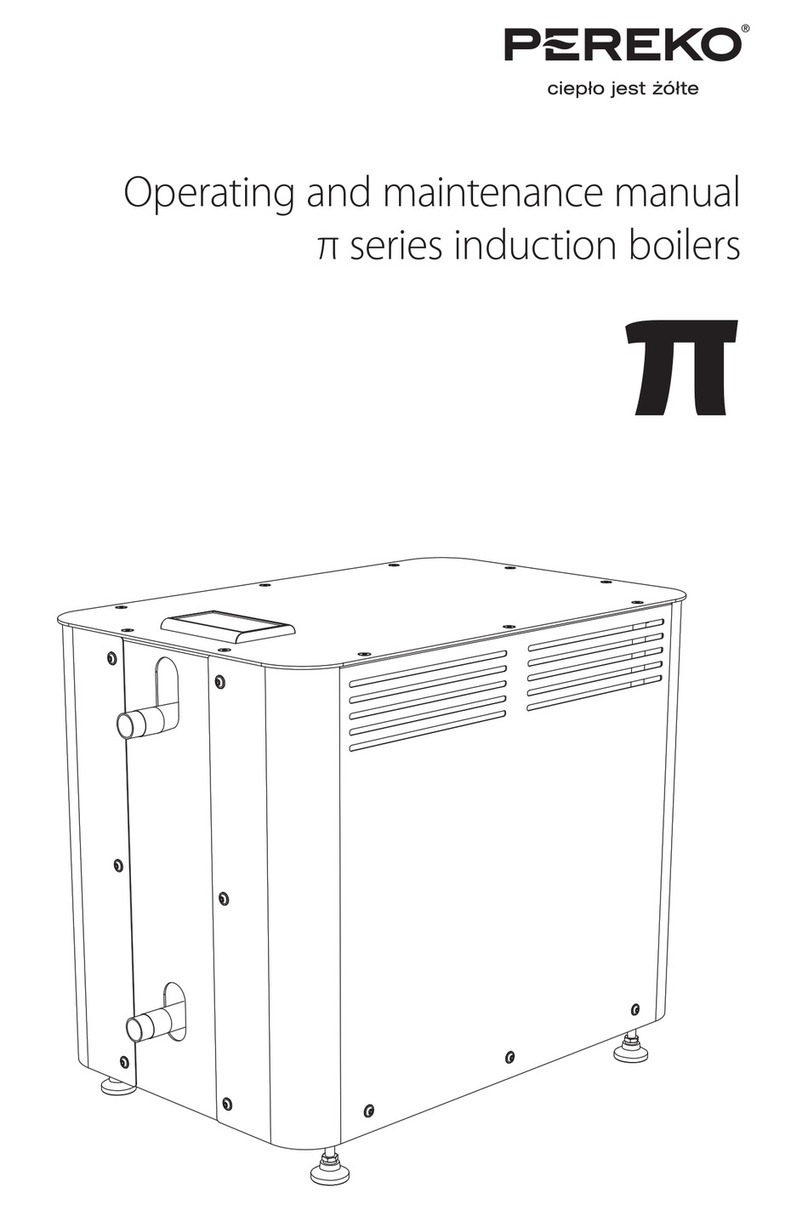
Per-Eko
Per-Eko p series Operating and maintenance manual
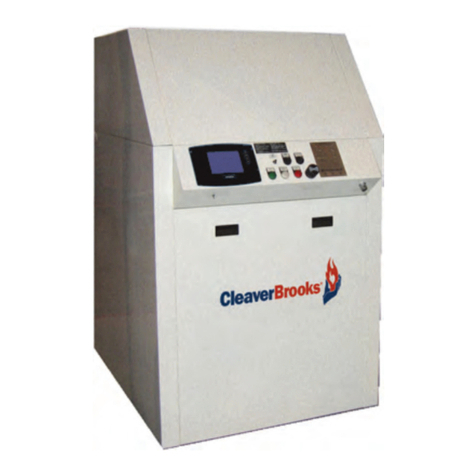
CleaverBrooks
CleaverBrooks CFC Operation, service and parts manual

Glowworm
Glowworm 24a Instructions for use
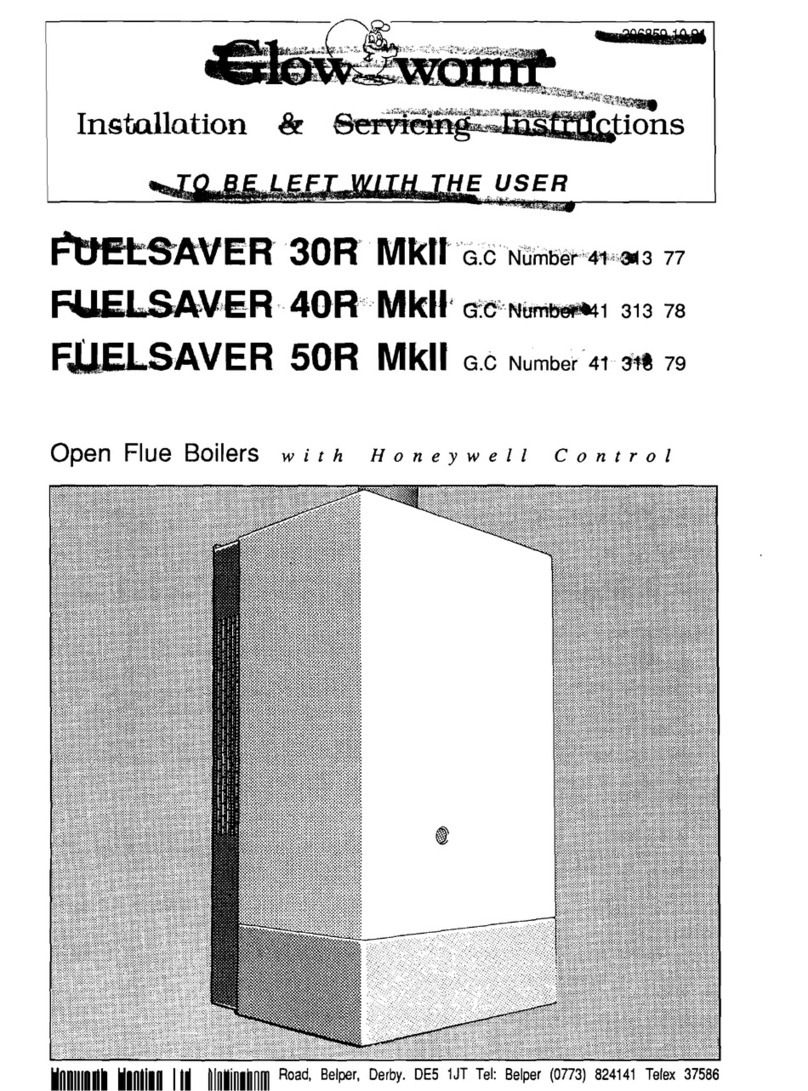
Glowworm
Glowworm Fuelsaver-40R-MkII Installation and servicing instructions
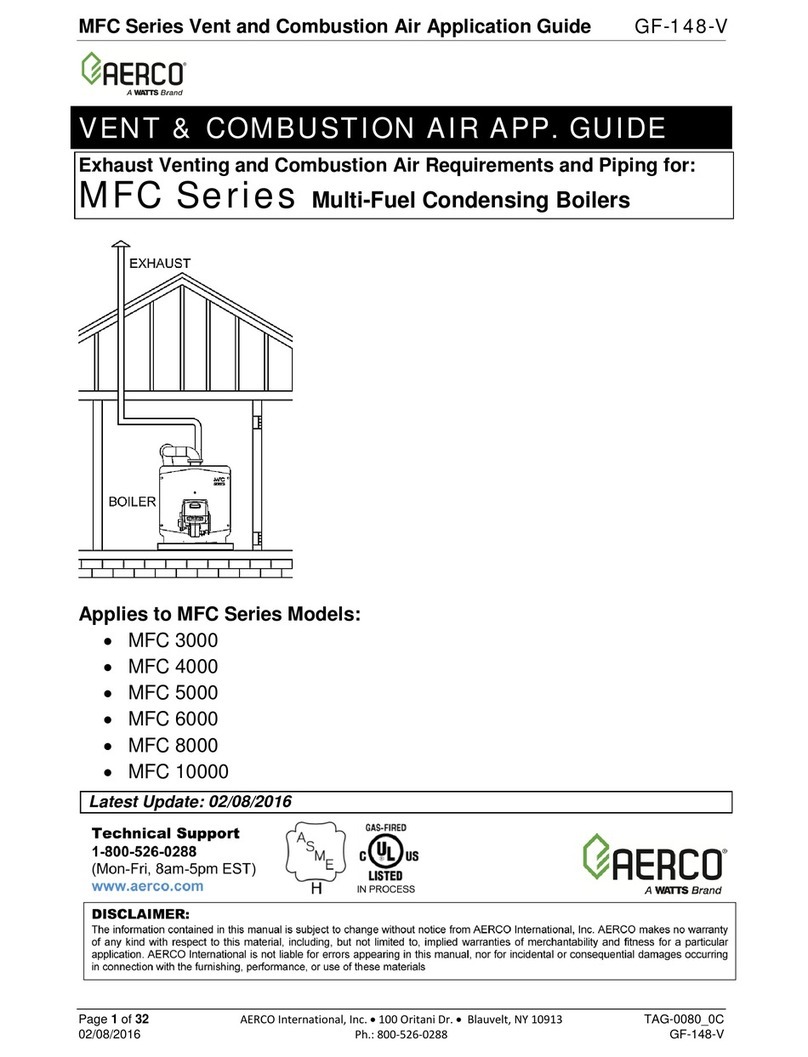
AER
AER MFC 3000 Application guide
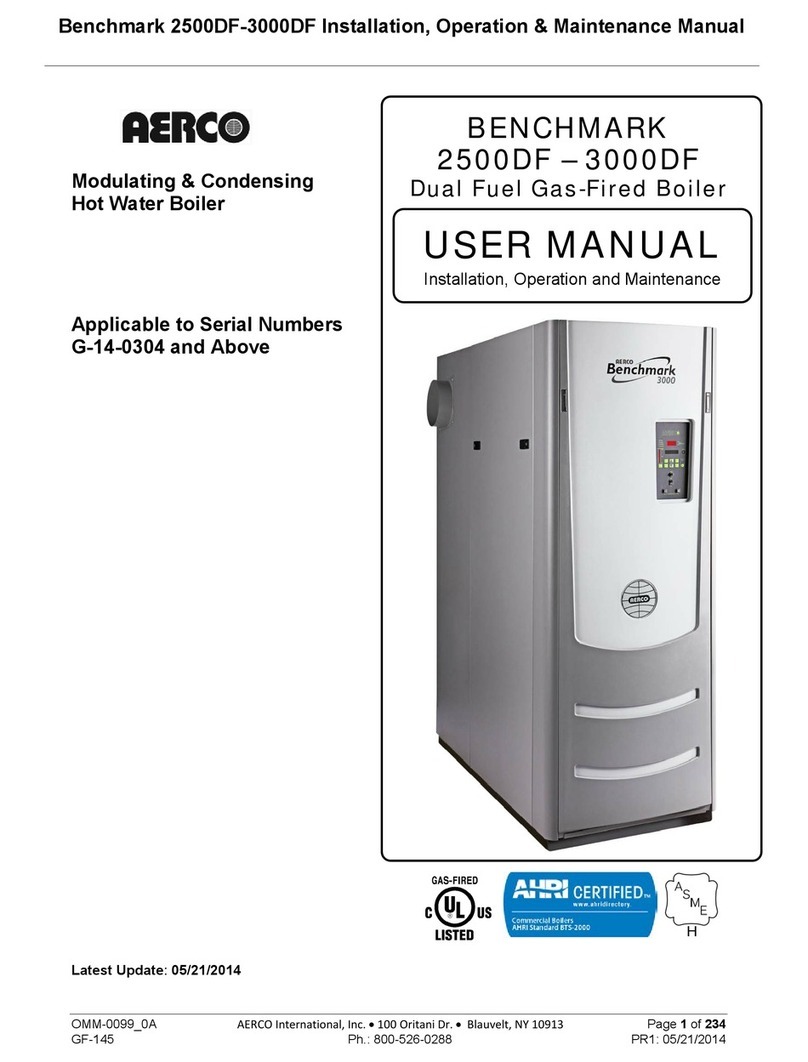
AER
AER BENCHMARK 2500DF user manual
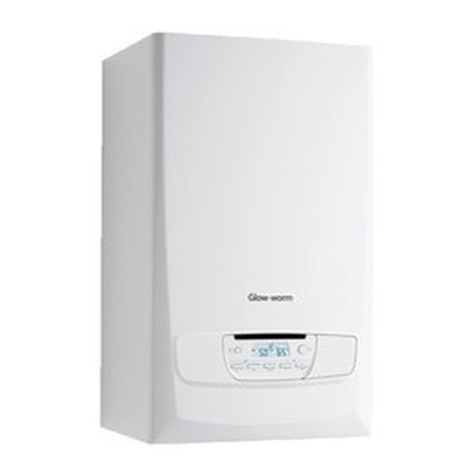
Glowworm
Glowworm Ultracom 24cxi Instructions for use

Glowworm
Glowworm Fuelsaver Complheat Series Instructions for use
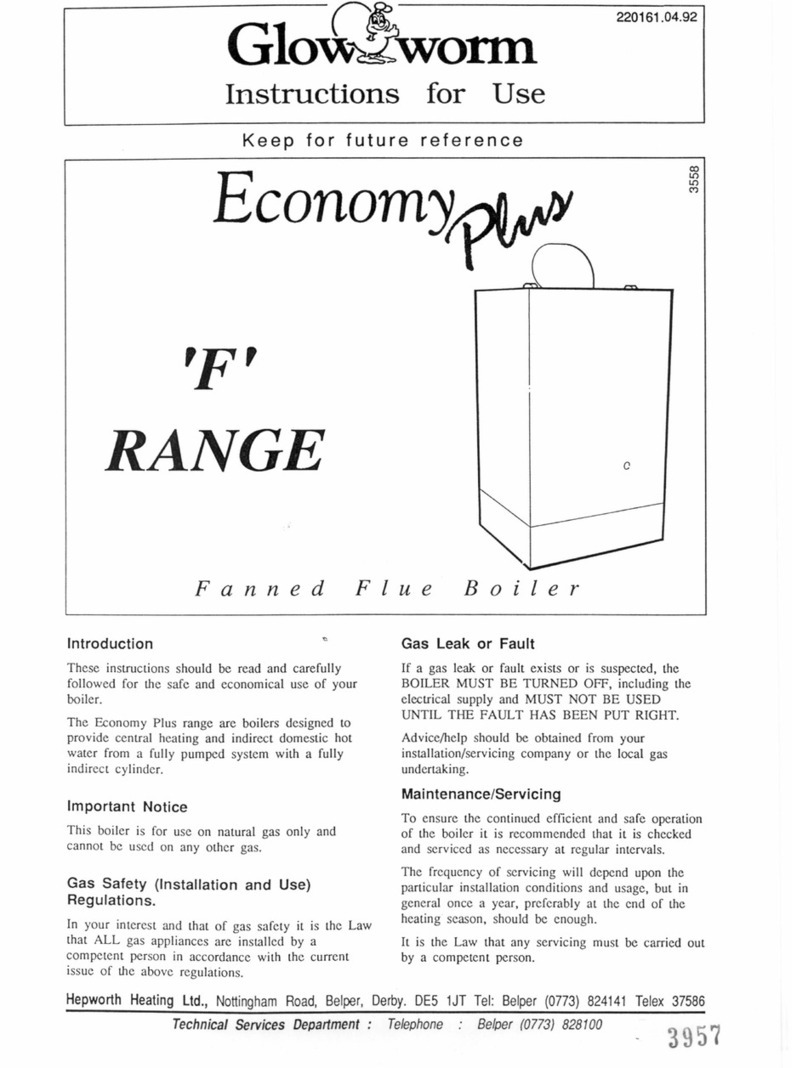
Glowworm
Glowworm Economy Plus Instructions for use manual
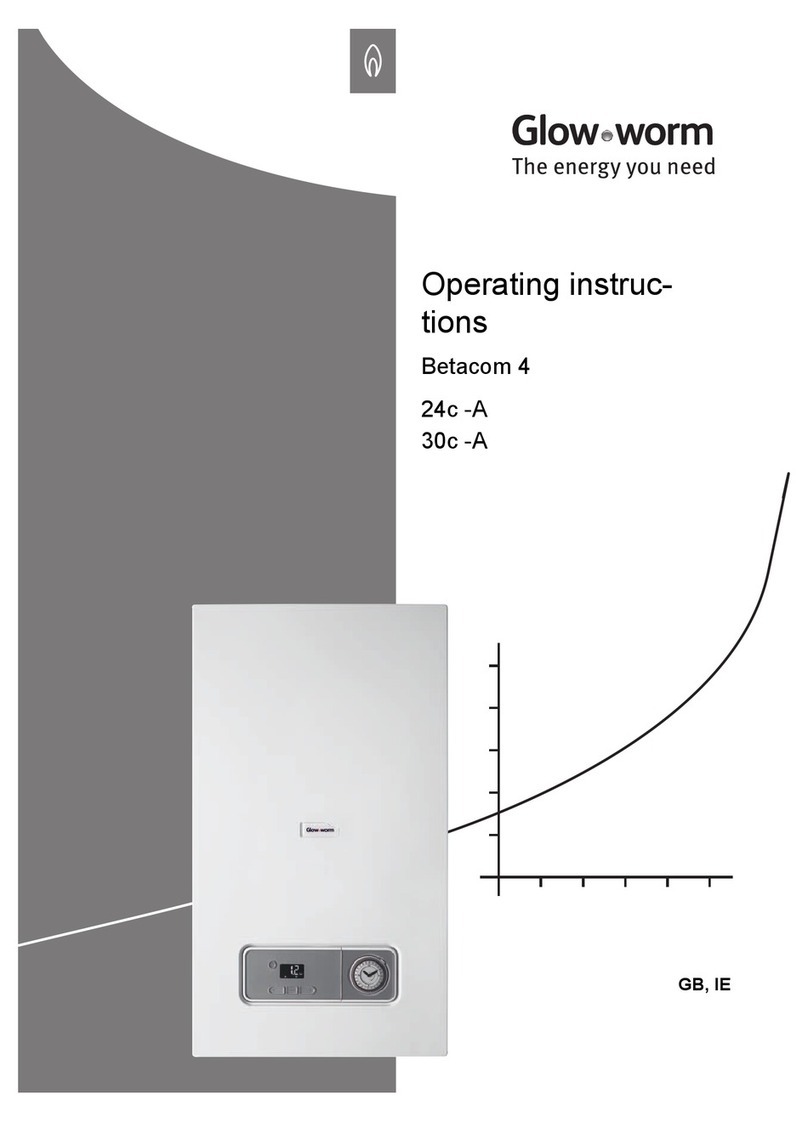
Glowworm
Glowworm Betacom 4 24c-A operating instructions
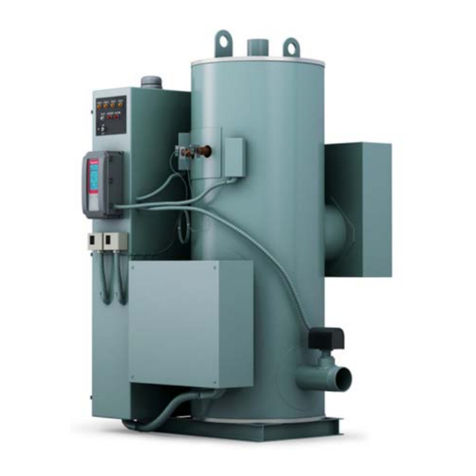
CleaverBrooks
CleaverBrooks WB Owner's operation and maintenance manual
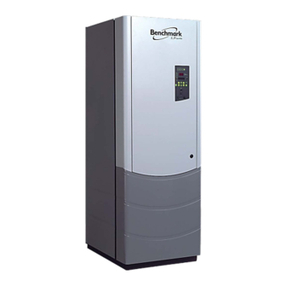
AER
AER Benchmark 1.5LN Installation, operation and maintenance manual



